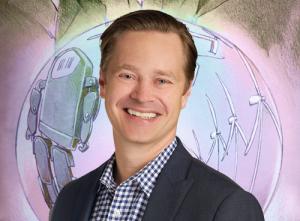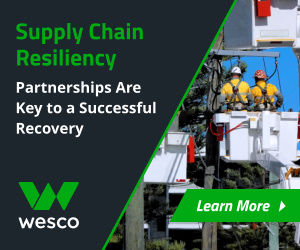Guidehouse
Dan Bradley is a partner in Guidehouse’s global Energy, Sustainability, and Infrastructure segment known for innovative approaches that help clients position themselves for growth as the industry rapidly transforms. Dan works across the utility, investor, and manufacturing sectors. His most notable recent work centers on his role as director-in-charge of REV Connect, where he is helping the State of New York advance its Reforming the Energy Vision goals through a first-of-its-kind program that facilitates partnerships between innovative companies and utilities. Dan has authored dozens of articles on the emerging energy markets and technologies and has spoken at numerous industry events. In 2019, he was recognized by Consulting Magazine as one of the Top 25 Consultants.
How will utilities' relationships with their customers change over the next decade? How can utilities get ahead of this?

Leading utilities are investing today in the technologies and systems required to become world class at integrating renewables and distributed energy resources (DER), enabling grid interactive buildings, driving transportation electrification infrastructure, and transforming the customer relationship model from reactive to proactive.
This new model embraces the prosumer, decarbonization objectives, platform orchestration, and a mission to provide value to all customers. Let's call this new model the Prosaver Utility.
Prosaver utilities will be defined by two characteristics: A proactive customer relationship building trust at each customer touch point coupled with a mission to deliver value to customers with savings of cost and carbon;
Proactive customer relationships - Prosaver utilities may be measured more by the volume and quality of outbound messaging to customers at a time and channel of the customer's preference than by the volume of inbound calls.
Proactive and personalized multi-channel communication will anticipate and proactively address customer issues around outages and billing or move out with the goal of each interaction to build trust in the relationship through the delivery of value.
Platforms to save customers carbon and cost - Prosaver utilities will proactively determine the value to be shared by resources on the grid at a determined location and point in time.
This value can be quantified, financed, and offered to the customer through platforms that reward performance when needed to address cost savings or carbon reduction. The platforms used to integrate and share value will be vehicles for new products and services to meet the proactive needs of customers.
Through these differentiated services, the Prosaver Utility model has the potential to be more effective in scaling the customer base and share of customer's energy spend than legacy models.
The result? Retained and satisfied customers who appreciate control over the channel of their choice, the value shared by the integration of their energy resources, and the overall reduction of carbon from the system.
PUF posed a baker's dozen questions about power's future to a similar number of the thought leaders at Guidehouse:
- Dan Hahn — You have a short elevator ride alone with the CEO of a major utility. What would you want to tell him or her?
- Karin Corfee — What major changes have we seen over the last year to the key opportunities and threats utilities are facing? What can utilities do to be better prepared for these changes?
- Erik Larson — Are utilities well-equipped for next generation Energy Cloud business models? What is your view on the industry's readiness? What can utilities do now to be ready?
- Dan Bradley — How will utilities' relationships with their customers change over the next decade? How can utilities get ahead of this?
- Ted Walker — We all hear of "as a service" offerings across many other industries. What does this mean for utilities? What does energy as a service look like?
- Shannon Graham — How are European energy companies positioning themselves in a quickly decarbonizing market? What lessons can be learned from them for U.S. utilities?
- Derek Jones — Approximately one-third of energy use in the U.S. is for transportation. How can utilities tap into this market in a significant way?
- David O'Brien — What are the major regulatory changes you see in the next decade? What is needed from regulators to optimize outcomes for all stakeholders?
- Margot Everett — What are the major changes to how utilities should approach rate design over the next decade to deal with challenging industry dynamics?
- Michelle Fay — What will the utility of the future look like in 2030? How will it be different from today's utility?
- Rick Rodman — How has risk management changed for utilities? What can utilities learn from other industries?
- Jenny Hampton — How can utilities use design thinking to develop game-changing innovations? What lessons can be learned from other industries?
- Danielle Vitoff — What role can utilities take in their customers' quest to decarbonize? How have we seen utilities shifting more decarbonization choices to their clients?



